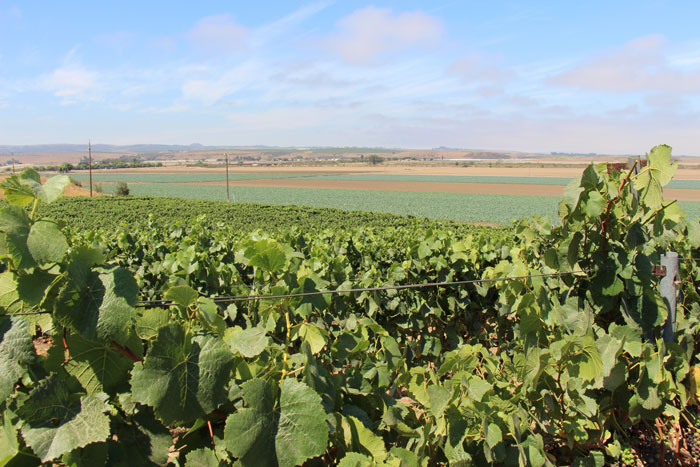
As July began, wine grape growers in Mendocino County were finishing up their canopy management while the berries on their vines advanced closer to verasion. Glenn McGourty, the county’s University of California Cooperative Extension viticulture advisor, expects that could begin on some early varieties early this month.
That would be ten to 14 days sooner than usual, due in part to recent temperatures frequently topping the 100-degree mark. Unusually warm winter and spring weather, including fewer frost events, also helped speed the crop along.
“Right now the vineyards are looking great,” he says. “Based on cluster numbers, the vines appear to have set a decent crop.”
In terms of precipitation, growers here have fared better than many of those elsewhere in the state. For the 2014-15 rainfall year, which ended June 30th, the county received 24 to 30 inches of rain. That compares to the average annual rainfall of 35 inches, McCGourty notes.
“Our growers have squeaked by with enough rain to irrigate normally this season,” he says.
Growers in Mendocino County rely mostly on surface water for irrigation. This includes the Russian and Navarro rivers and, in many cases, runoff collected in their own ponds and reservoirs. To the east in Lake County, wine grape growers get much of their irrigation water from wells. Supplies of groundwater around Big Valley near Clear Lake are in good shape, while those in the upland areas of the county are more marginal, McGourty adds.
The leaf-feeding Virginia creeper leafhopper continues to pose problems for organic wine grape growers in both Mendocino and Lake Counties, he reports.
“The outbreaks are spotty, but scouting reports indicate populations are a little higher than last year,” McGourty says.
First found in the North Coast region several years ago, this pest can cause significant damage by sucking chlorophyll out of the leaves. Several products for controlling the Virginia creeper leafhopper are available for use in conventionally-grown vineyards. However, organic growers have few effective options, he notes.
For example, the tiny Anagrus spp. wasp, which controls western grape leafhoppers by parasitizing its eggs, seems to have no effect in controlling the Virginia creeper leaf hopper, he notes.
Pyganic, a pyrethrin-based broad-spectrum insecticide, which is registered for organic and biodynamic crop production, kills only the nymph stage of this pest. Also, it kills beneficial insects. Organic growers struggle to control this insect with multiple applications of Pyganic, stylet oil and DeBug Turbo (a neem product), McGourty says.
The Virginia creeper leafhopper seems to prefer certain varieties. “This pest tends to attack vines that don’t have a lot of fuzz on the leaves,” McGourty says. “Grenache, with its fairly smooth leaves, is one of its favorites. Apparently, the insect can reproduce easily on it. The insect also likes Chardonnay.”
“At the same time, we hardly ever see the Virginia creeper leafhopper in our test plots of varieties with fuzzy leaves.” Many Portuguese varieties and Zinfandel are not nearly as attractive to the pest because of their fuzzy leaves.
Looking ahead to the coming harvest, labor for picking the grapes continues to be a concern for some Mendocino County growers. But, it’s for a different reason than growers elsewhere in the state.
Here, the grapes are ripe at the same time the area’s marijuana crop is ready for harvest. As a result, McGourty notes, some grape workers, particularly in the outlying areas, leave the vineyards for better-paying work trimming and harvesting the marijuana.
Meanwhile, Mendocino County’s wine grape growers are encouraged by how their vineyards are looking.
“The wild card is how the crop finishes out,” McGourty says. “The last few weeks on the vine can make a pretty big difference in the quality of the grapes.”
Take the case of Pinot Noir, which accounts for about a fourth of the county’s 10,000 acres of red grapes. Wineries like this variety to be picked at 24º to 25º Brix. However, a few hot days just before harvest can cause sugar levels, especially in grapes on the afternoon sides of the vines, to surge as high as 28º to 30º
That’s just what happened in each of the past two seasons, requiring selective picking in the vineyards and some skillful blending in the wineries to deal with it, McGourty says.
About the Author(s)
You May Also Like




